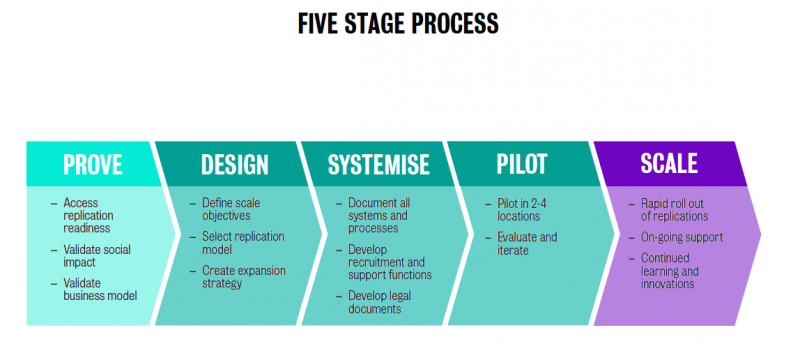
Why and how to fund for scale
Spring Impact works with funders and social-purpose organizations to scale impact through social replication, by taking existing social innovations to new markets.
Social replication can seem daunting, but Spring Impact has been helping others understand what it takes and how to approach it systematically for six years.
In our previous newsletters, Directors Greg Coussa and Joe Kallarackal wrote about how we work with organizations to replicate their innovations. Today, I will share more about the critical role of funders in supporting replication.
Why fund for scale?
The most compelling reason to fund for scale is to address the urgent needs of millions. We are too far from addressing the world’s most challenging problems. According to the latest UNDP reports, 795 million people are estimated to be chronically undernourished, six million children die before their fifth birthday, and nearly 40% of the world are affected by water shortages. Frustratingly, for many of these problems solutions do exist, but they are not reaching all those in need quickly enough. Scaling up an existing innovation, like a poverty graduation program or a vaccine program, has the potential to effectively address needs more rapidly. By investing in the replication of innovations that are proven to work, funders have the chance to use limited resources towards greater social impact.
Funders have an important role to play in supporting innovations to replicate successfully. Not only do they provide vital resources, but funders are thought partners for their grantees or investees, and thought leaders in the sector.
How to fund for scale?
At Spring Impact, we’ve heard funders consider ways to better support individual organizations and reflect on ways to create radical change in the wider social sector, asking questions such as:
- How can we identify an innovation that has the potential to replicate successfully?
- How can we identify when an innovation is ready to replicate?
- How can we help organizations prepare for replication?
- What are the risks and barriers to replication and ways to address them?
- How can we create an environment that enables and pushes impactful innovations to reach new markets that need these solutions?
|
Are you interested in understanding how you can better support innovations to scale their impact? Get in touch here!
Cho Kim,
US Director
Spring Impact


